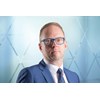What goes up must come down: the evolution of the lithium industry
Following our panel at the Future Facing Commodities Forum last month, we take a look at where the lithium industry has been, where it is and where it is going
4 minute read
Allan Pedersen
Research Director, Lithium

Allan Pedersen
Research Director, Lithium
Latest articles by Allan
-
Opinion
Direct lithium extraction: is the hype justified by the reality?
-
Opinion
Five options to address the looming lithium surplus
-
Opinion
A tale of a looming surplus in the lithium industry: sticky supply to stay?
-
Opinion
What goes up must come down: the evolution of the lithium industry
-
Opinion
Lithium: 5 things to look for in 2024
-
Opinion
Six factors shaping the lithium market
Any industry experiencing an intense and prolonged growth trajectory will incur periods where it is less smooth sailing. In the last few years, lithium went through one of those periods where a supply deficit resulted in prices increasing eight to thirteenfold. As the market moved towards balancing, the prices reacted with a fast downward trend. Prices have been relatively stable after the Chinese New Year 2024, so the big question is, what happens next?
Fill out the form on the right to download your complimentary copy of our report exploring the state of the lithium industry, including some detailed graphs, and to access the event recording, or read on for a summary of some of the key takeaways:
Where are we coming from?
In 2017, the market experienced hype about future demand, so prices increased sharply. The hype was, however, not underpinned by investments in the EV supply chain, and reality kicked in, and prices declined again. The chart below shows that prices in Q1 2018 were approximately double those in Q1 2021.
In 2021, the strong demand growth exceeded the growth in the supply of lithium chemicals, and the market experienced a shortage. Companies fearing being unable to meet the downstream supply obligations increased their strategic inventory and the constantly growing working inventories. The result was that demand exceeded actual consumption, further deepening the deficit, and as a result, prices skyrocketed. As demand growth slowed and refining output increased, the market returned to normality. Companies that previously built inventories were keen to eliminate the inventory acquired when prices rose. This resulted in lower demand than actual consumption, and prices declined.
Where are we now?
If we look closely at the evolution of price and compare that to the growth of EVs as the largest driver of demand, we see a picture similar to the above.
From January 2021, we have seen EV sales increase 2.4 times to January 2024, with a steady and continued increase, albeit with some seasonality. During this short period, we see lithium carbonate prices shoot up and decline after a short period of stability. Fast forward to January 2024, and lithium carbonate prices have grown less since January 2021 than EV sales. This could indicate that the industry is returning to some level of normality.
Where are we going?
Undoubtedly, demand for lithium will continue to be strong in the coming years as the world continues to decarbonise. It is also no secret that while demand continues to grow, the rates will be lower than the extraordinary rates seen in some periods in the last few years.
The market balance in the coming years will be primarily determined by supply. The incredible prices seen in 2022 spurred many investments into lithium chemical capacity, and we expect much of this capacity to enter the market in 2024 and 2025. During these two crucial years, we are currently forecasting an additional 873 kt LCE to be added to supply. This growth exceeds the entire lithium market size in 2022. Of this additional production, 69% will be from Chinese-based assets, including 39 new refinery assets in China alone.
The supply growth will exceed the increase in demand, and the market will enter a period of supply surplus. There have been very few industry announcements that will impact the output in the near term; most announcements have been targeted at longer-term investment delays. It is possible, but it still needs to be determined if any new Chinese refinery assets will halt construction so close to completion or if any of the assets currently ramping up will stop. The diagram below highlights some aspects that could influence the shape of the future supply curve.
An overview
While we focus on the decrease needed near-term in the supply of lithium chemicals, there are two aspects we need to keep in mind:
Companies with very low-cost assets on the cost curve could continue to expand and make a profit in the process. An expansion of low-cost assets could lead to lower prices, putting other assets at risk of becoming margin-negative.
At the end of the current decade, the lithium industry is forecast to enter another supply deficit. Continued growth in demand and a slowdown in supply growth will lead to this. Any assets put on care and maintenance during the current surplus period will be needed longer-term.
It is important to remember that the lithium industry is very young. We have a short history of data to rely on in anticipation of what will happen next. Very few, if any, industries have ever seen such a strong and continued demand growth rate as the lithium industry. The industry has no dormant mines that can restart to fill a supply gap, as we sometimes see in other sectors. The lithium industry must find economically viable resources, go through the process of firming up the resources and reserves, obtain permits, go through the stages of feasibility studies and finally obtain financing to build the asset.
These challenges will, without doubt, create micro-cycles where supply and demand are misaligned. These periods will create a level of confusion and uncertainty, but it is crucial to remember that the decarbonisation efforts are global, ongoing and intensifying, which creates a solid foundation for lithium.
Learn more
Fill out the form at the top of the page to access a full video recording of our lithium talk, and to download the full report, featuring extra insights into the evolution of the industry and some detailed graphs.






